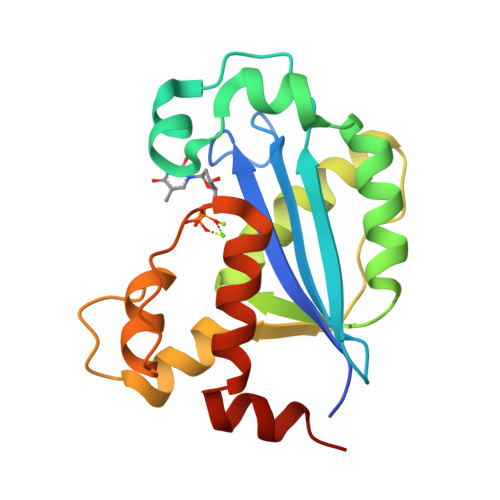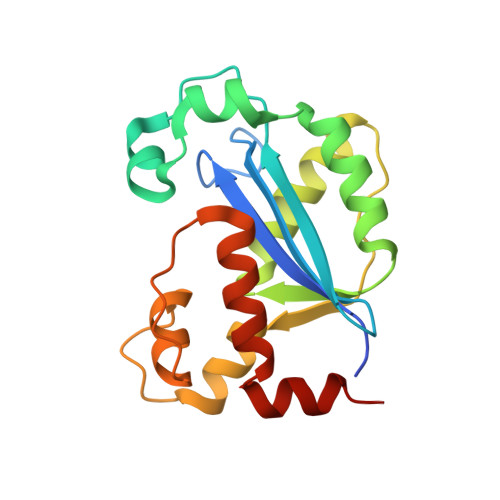DnaQ mediates directional spacer acquisition in the CRISPR-Cas system by a time-dependent mechanism.
Tang, D., Jia, T., Luo, Y., Mou, B., Cheng, J., Qi, S., Yao, S., Su, Z., Yu, Y., Chen, Q.(2023) Innovation (Camb) 4: 100495-100495
- PubMed: 37663930
- DOI: https://doi.org/10.1016/j.xinn.2023.100495
- Primary Citation of Related Structures:
8H18, 8H2F, 8HI1 - PubMed Abstract:
In the spacer acquisition stage of CRISPR-Cas immunity, spacer orientation and protospacer adjacent motif (PAM) removal are two prerequisites for functional spacer integration. Cas4 has been implicated in both processing the prespacer and determining the spacer orientation. In Cas4-lacking systems, host 3'-5' DnaQ family exonucleases were recently reported to play a Cas4-like role. However, the molecular details of DnaQ functions remain elusive. Here, we characterized the spacer acquisition of the adaptation module of the Streptococcus thermophilus type I-E system, in which a DnaQ domain naturally fuses with Cas2. We presented X-ray crystal structures and cryo-electron microscopy structures of this adaptation module. Our biochemical data showed that DnaQ trimmed PAM-containing and PAM-deficient overhangs with different efficiencies. Based on these results, we proposed a time-dependent model for DnaQ-mediated spacer acquisition to elucidate PAM removal and spacer orientation determination in Cas4-lacking CRISPR-Cas systems.
Organizational Affiliation:
Department of Urology, State Key Laboratory of Biotherapy, West China Hospital, Sichuan University, Chengdu 610041, China.


















